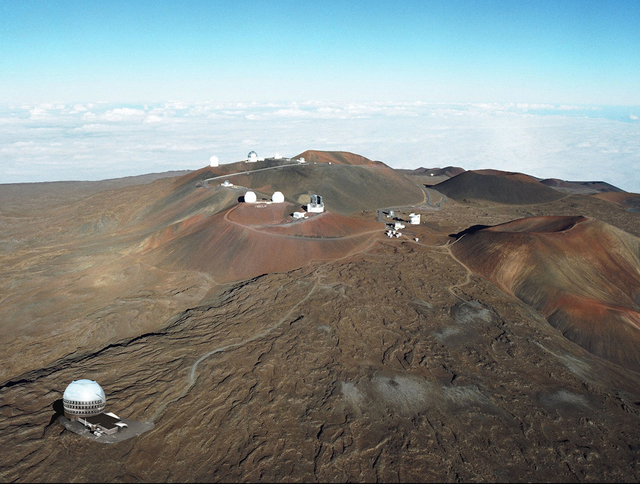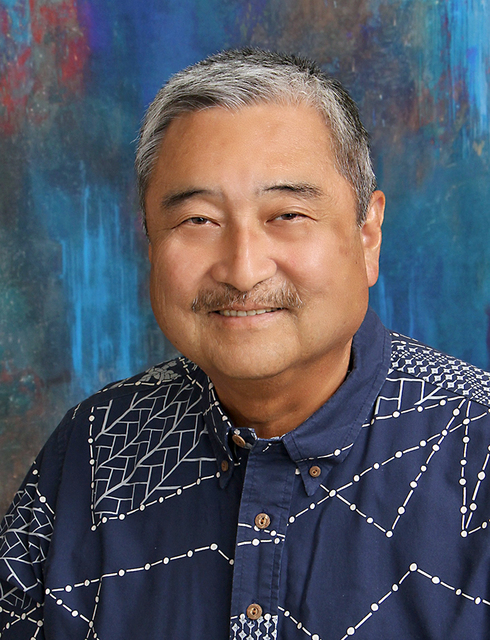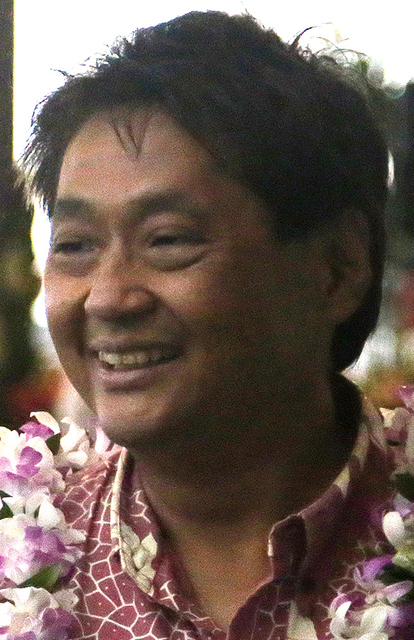Several Big Island lawmakers are backing legislation that would establish seven “science and technology research subzones,” including one covering Mauna Kea’s astronomy precinct.
The 21-page bill would give the state Board of Land and Natural Resources authority over subzone activities in Conservation Districts, such as those covering the mountain, and would appear to simplify rules for building within those areas.
Barry Taniguchi, a Big Island businessman who circulated the bill among lawmakers, said it was drafted by a group of telescope supporters in Hilo concerned about the future of astronomy on the mountain following the loss of the Thirty Meter Telescope’s land use permit. He declined to name the other people involved.
Representatives of the University of Hawaii, which holds the master lease for the Mauna Kea Science Reserve, and Mauna Kea observatories said they didn’t draft the bill.
“We are worried Mauna Kea might be taken out” of astronomy, said Taniguchi, chairman and CEO of KTA Super Stores. “I think we’d like to start the conversation.”
Rep. Mark Nakashima (D-Hamakua, Hilo) introduced the bill in the House, along with signatures from Big Island Reps. Nicole Lowen, Richard Onishi and Clift Tsuji. Senate President Ronald Kouchi introduced a companion bill.
Nakashima said he saw the bill as a way to attract jobs and address concerns about Hawaii’s reputation as a bad place to do business.
But Kealoha Pisciotta, one of the TMT litigants, said the bill is just a way to change the rules in favor of the state after it lost an appeal of the $1.4 billion project’s Conservation District land use permit for Mauna Kea.
“When you can’t prevail with the law, you change the law,” she said after reviewing the legislation.
Under the bill, permits would be approved for projects within the subzones if: there is no unreasonable adverse health, environmental or socioeconomic effects on residents or surrounding property; the use would not unreasonably burden public agencies; and there are reasonable measures available to mitigate adverse effects or burdens.
That would appear to simplify the existing eight requirements for building within Conservation Districts.
Those include requirements that land uses not cause substantial impacts to natural resources, buildings are compatible with surrounding areas, existing environmental aspects of the land are preserved or improved upon, subdivision of land does not increase the intensity of land uses, and land uses not be detrimental to public health, safety or welfare.
TMT opponents have questioned whether the project meets the criteria for building within a Conservation District on Mauna Kea, a site connected to the Native Hawaiian creation story.
Counties would have authority over projects proposed in subzones in agriculture, rural and urban areas. No special use permits would be required.
Public hearings would be hosted for proposed projects, and mediation would be offered as a way to handle disputes.
But the bill also would eliminate the use of contested case hearings, used during the recent TMT proceedings, though decisions by the Land Board or county planning commissions could be appealed directly to the state Intermediate Court of Appeals.
Taniguchi said he doesn’t expect the bill, if adopted, to change much for the TMT International Observatory, which hasn’t yet announced whether it will go through the permit approval process again.
The state Supreme Court overturned the permit in December after ruling the Land Board should have had a contested case hearing before voting to approve it.
“I think it’s going to take a while before this bill will pass,” Taniguchi said.
“I don’t think it will help them per se right away.”
The bill could give the observatories more certainty over their future. Their leases are set to expire in 2033, when UH’s master lease ends.
Other research subzones would be created for the observatory sites on Haleakala, UH-Hilo’s Hawaii Innovation Center, Maui Research &Technology Center, and the Natural Energy Laboratory of Hawaii Authority’s facilities in Kailua-Kona and the former HGP-A geothermal well, which it leases.
The legislation was filed as HB 2712 in the House and SB 3020 in the Senate.
Bills in both chambers passed first reading and were referred to their committee assignments.
Email Tom Callis at tcallis@hawaiitribune-herald.com.











